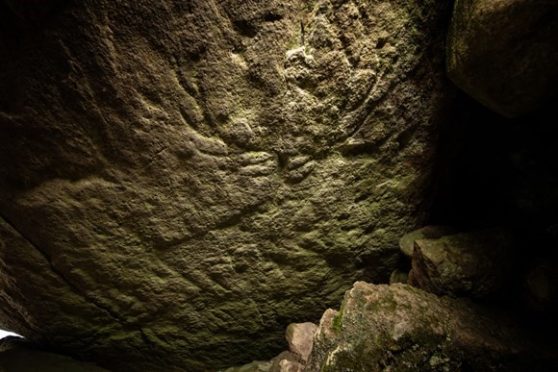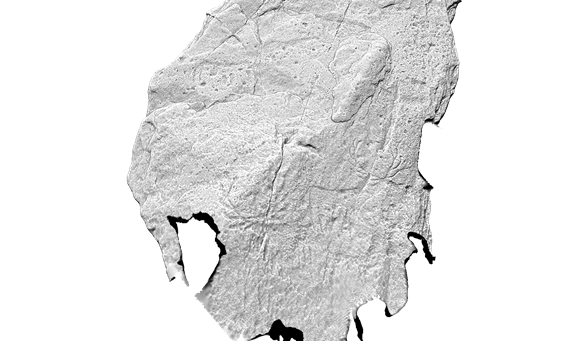
Prehistoric animal carvings, thought to be between 4000 and 5000 years old have been discovered for the first time in Scotland.
The carvings, thought to date to Neolithic or Early Bronze Age, were found inside Dunchraigaig Cairn in Kilmartin Glen.
They include depictions of two male red deer, which are considered to have been the largest deer species in Scotland during this time.
Full-grown antlers can be seen on both animals, while anatomical detail including a short tail can be seen on one. Three other quadrupeds are also visible, two of which are thought to be juvenile deer.
Valuable as sources of meat, hides, and with bones and antlers used for a variety of tools, deer would have been very important to local communities during the Neolithic and Early Bronze Age.
These are the earliest known animal carvings in Scotland, and the first clear examples of deer carvings from the Neolithic to Early Bronze Age in the whole of the UK.
The carvings were discovered by chance by Hamish Fenton, who has a background in archaeology, while visiting Kilmartin Glen. The carvings are located inside Dunchraigaig Cairn on the capstone of an Early Bronze Age burial cist.
Kilmartin Glen has one of the most important concentration of Neolithic and Bronze Age remains in mainland Scotland, including some of the finest cup and ring markings in the country.
This is the first time that animal carvings of this date have been discovered in an area with cup and ring markings in the UK.
There are over 3,000 prehistoric carved rocks in Scotland.

The vast majority are cup and ring markings which are abstract motifs created by striking the rock surface with a stone tool, such as a large river-washed pebble.
Most commonly, cup and ring markings are composed of a central cup mark surrounded by pecked concentric circles. While many of these mysterious carvings can still be seen in the open landscape today, little is known about how they were used, or what purpose they served.
Dr Tertia Barnett, Principal Investigator for Scotland’s Rock Art Project at HES, said: “It was previously thought that prehistoric animal carvings of this date didn’t exist in Scotland, although they are known in parts of Europe, so it is very exciting that they have now been discovered here for the first time in the historic Kilmartin Glen.
“This extremely rare discovery completely changes the assumption that prehistoric rock art in Britain was mainly geometric and non-figurative.
“While there are a few prehistoric carvings of deer in the UK, the only other ones created in the Early Bronze Age are very schematic. It is remarkable that these carvings in Dunchraigaig Cairn show such great anatomical detail and there is no doubt about which animal species they represent.
“This also tells us that the local communities were carving animals as well as cup and ring motifs which is in keeping with what we know of other Neolithic and Bronze Age societies, particularly in Scandinavia and Iberia.
“Until now, we did not know of any area in Britain with both types of carvings, which poses questions about the relationship between them and their significance to the people that created them.”
The cairn is a property care of Historic Environment Scotland and is closed while the organisation carries out further evaluation .
Visitors are encouraged to explore the carvings via 3D models.

Enjoy the convenience of having The Sunday Post delivered as a digital ePaper straight to your smartphone, tablet or computer.
Subscribe for only £5.49 a month and enjoy all the benefits of the printed paper as a digital replica.
Subscribe